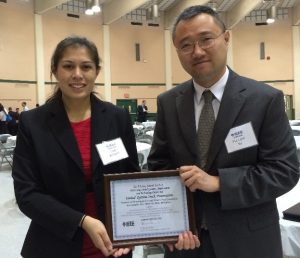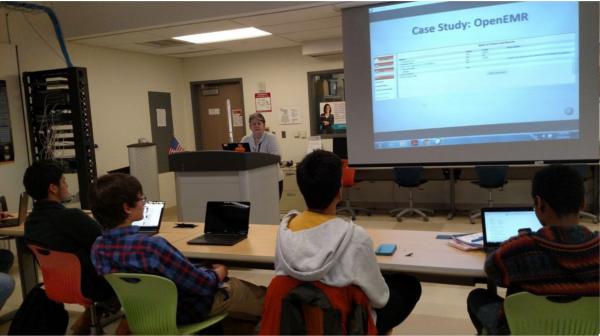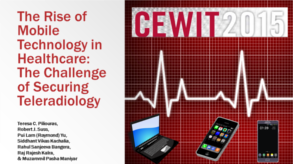2015 IEEE Long Island Systems, Applications and Technology Conference (LISAT 2015)
TCR’s Center for Advanced Research on Emerging Healthcare Technologies presents peer-reviewed paper
“Digital Imaging & Electronic Health Record Systems: Implementation and Regulatory Challenges Faced By Healthcare Providers.”
Abstract– Electronic capture of patient records, including digital imaging, facilitates: i) collaboration and communication between providers and entities involved in patient care, ii) compilation of lifetime patient histories that are more accessible to treating physicians, and iii) aggregation of population data for evidence-based medicine and creation of decision support tools. The Medicare and Medicaid electronic health record (EHR) Incentive Programs and associated Meaningful Use (MU) requirements are a driving force in the evolution towards digitized patient recordkeeping. For the foreseeable future, MU will continue to exert pressure on EHR vendors, hospitals, and ambulatory practices to conform to increasingly stringent government reporting requirements or else face obsolescence and/or reduced fees for services. This is encouraging many practices – including radiology and digital imaging centers – that may have opted out of MU compliance in the past – to re-examine how they integrate their work flows with EHR systems and with other physicians and treatment facilities. This paper describes digital imaging technology and strategies to interface and integrate it with EHR systems and clinical work flows. A case study based on the open source electronic health record software, OpenEMR, is presented as an illustrative example of challenges integrating imaging and EHR technology across and between clinical practices. The case study demonstrates how poor EHR integration with picture archiving and communication systems (PACS) and radiology information systems (RIS) complicates and adds to the clinician work flow and reduces the diagnostic value of imaging data. EHR, PACS, and RIS vendors need to improve system interoperability and image sharing capabilities in their product offerings. Better, more complete standards are needed to enable this to happen. DICOM, HL7, IHE, and other standards are evolving to address gaps in data integration and continuity across the spectrum of health information technology used in patient care. This will alleviate burdens on healthcare professionals and information technology staff who must use and implement systems infrastructure while maintaining compliance with Meaningful Use (MU) and Health Insurance Portability and Accountability Act (HIPAA). This is essential to achieving technology’s promise of optimized healthcare delivery.
This paper is available in its entirety on IEEE Xplore.
Dr. Teresa Piliouras
Latest posts by Dr. Teresa Piliouras (see all)
- Best We Can Be Featured in IEEE Pulse Magazine - February 23, 2016
- CEWIT 2015 12th International Conference & Expo on Emerging Technologies for a Smarter World - October 16, 2015
- 2015 IEEE Long Island Systems, Applications and Technology Conference (LISAT 2015) - May 1, 2015















